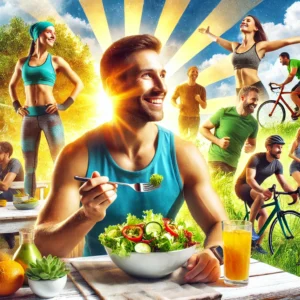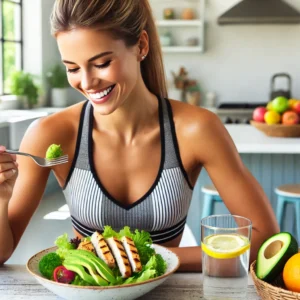Protein is the cornerstone of any healthy diet, especially for those with active lifestyles. Whether you’re a fitness enthusiast, a busy professional, or someone striving to adopt healthier eating habits, incorporating high protein salad recipes into your routine can be a game-changer. These nutrient-dense meals are not only delicious but also help support muscle repair, boost energy, and keep you feeling full longer.
Packed with lean proteins, vibrant vegetables, and wholesome grains, protein rich salad ideas cater to a variety of dietary needs. From high protein vegetarian salads to keto friendly high protein salads, there’s something for everyone. They’re a perfect choice for anyone looking to maintain a balanced diet, whether the goal is weight loss, muscle building, or simply enjoying healthy, satisfying meals.
One of the greatest advantages of these healthy protein packed salads is their versatility. They can easily be tailored to suit individual preferences, such as post-workout protein salad recipes for recovery, or gluten free high protein salads for those with dietary restrictions. With so many options available, it’s never been easier to create easy protein salads for meal prep that are both delicious and nutritious.
In this guide, we’ll explore the best high protein salads, why they’re essential for a balanced diet, and provide practical tips on how to build your perfect bowl for any occasion. Whether you’re crafting a high protein salad for weight loss or experimenting with bold flavors, these recipes will inspire you to take your meals to the next level.
Table of Contents

The Importance of Protein in a Healthy Diet
Protein is often called the building block of life, and for good reason. It plays a crucial role in:
- Building and repairing muscles.
- Supporting healthy skin, hair, and nails.
- Keeping you full longer, making it easier to avoid unhealthy snacking.
For those focused on fitness, protein is essential for muscle recovery after a workout. High protein salads can provide the nutrients your body craves without weighing you down.
For example, pairing grilled chicken with leafy greens and quinoa not only provides a protein punch but also delivers fiber and essential vitamins. These combinations are perfect for post workout recovery, as highlighted in “The Role of Protein in Post-Workout Recovery Salads.”
How to Build a High Protein Salad
Crafting high protein salad recipes doesn’t have to be complicated. Follow these steps to create a bowl that’s as nutritious as it is tasty:
1. Choose Your Base
Start with a foundation of nutrient-rich greens such as spinach, kale, or arugula. You can also incorporate whole grains like quinoa, farro, or brown rice for extra fiber and protein.
2. Add a Protein Powerhouse
The protein is the star of your salad. Here are some great options:
- Lean Meats: Grilled chicken, turkey, or steak.
- Plant Based Proteins: Tofu, tempeh, lentils, or edamame (check out “Vegan High-Protein Salad Recipes” for ideas).
- Seafood: Salmon, shrimp, or tuna for added omega-3s and protein (see “Salmon Salad Recipes for Protein and Omega-3s”).
3. Mix in Flavorful Extras
Enhance the taste and nutritional profile with:
- Fresh veggies: Cherry tomatoes, cucumbers, or bell peppers.
- Fruits: Sliced apples, oranges, or dried cranberries for a touch of sweetness.
- Healthy fats: Avocado slices, olives, or nuts.
4. Use a Protein Rich Dressing
Skip the store-bought dressings loaded with sugar and opt for homemade options like:
- Greek yogurt-based Caesar or ranch.
- Tahini with lemon and garlic.
- Olive oil with balsamic vinegar.
Explore “Greek Yogurt-Based Dressings for Protein Rich Salads” for more ideas!
5. Balance Macros
Don’t forget to balance carbs, fats, and proteins for a well-rounded meal. For inspiration, read “How to Balance Protein, Carbs, and Fats in Salads.”
What Makes High Protein Salads Unique?
Unlike traditional salads, high protein salads are designed to keep you satiated for longer. They also offer several unique benefits:
- Customizable for Dietary Needs: Whether you’re vegan, gluten-free, or dairy-free, these salads can be tailored to your preferences. See “Dairy-Free High Protein Salad Recipes” for inspiration.
- Great for Meal Prep: With ingredients like chicken, hard-boiled eggs, and beans, these salads can be prepared in advance and stored for busy days (check out “High Protein Chicken Salad Recipes for Meal Prep”).
- Low Calorie Options: Many high protein salad recipes under 400 calories are ideal for those watching their calorie intake.
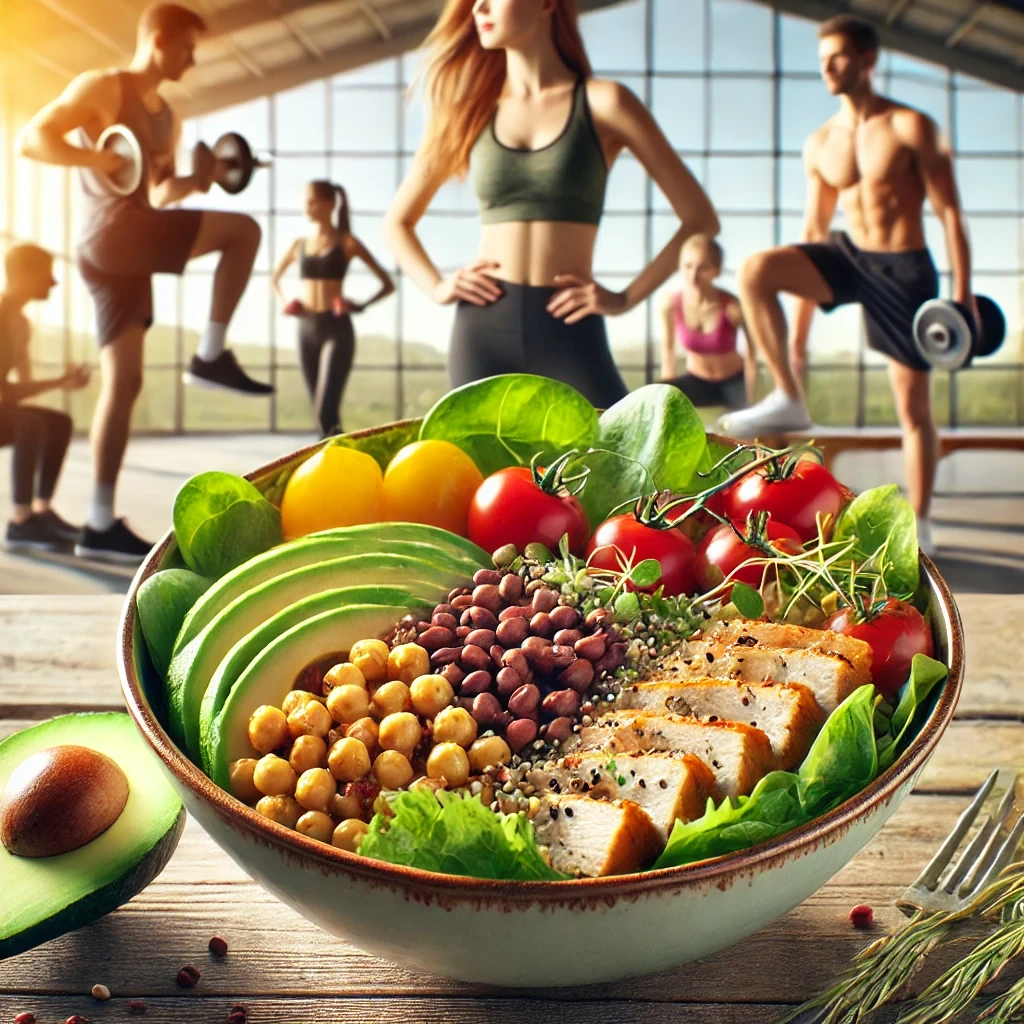
Sample Recipe: Classic High Protein Grilled Chicken Salad
Ingredients
- 2 cups baby spinach.
- 1 cup cooked quinoa.
- 1 grilled chicken breast, sliced.
- 1/2 avocado, diced.
- 1/4 cup crumbled feta cheese.
- 2 tbsp Greek yogurt-based ranch dressing.
Instructions
- Arrange spinach and quinoa as the base.
- Top with grilled chicken slices and avocado.
- Sprinkle feta cheese and drizzle with dressing.
- Toss gently and serve immediately.
This dish packs a whopping 35g of protein per serving, making it perfect for post-workout recovery or a filling lunch.
Why You Should Add High Protein Salads to Your Routine
High-protein salads are more than just another meal option—they’re a powerful tool to support your health and lifestyle goals. Whether you’re looking to improve your energy levels, build muscle, or maintain a balanced diet, these high protein salad recipes offer the perfect solution. Packed with nutrients, they deliver essential proteins to fuel your body without sacrificing taste or convenience.
One of the greatest benefits of healthy protein packed salads is their versatility. They cater to virtually every dietary preference, from keto-friendly high-protein salads to high-protein vegetarian salads for plant-based eaters. For those seeking convenience, easy protein salads for meal prep make it simple to stay on track with your nutrition goals, even during the busiest days.
If weight loss is your goal, a high-protein salad for weight loss can help you stay full longer, reducing hunger and unnecessary snacking. For fitness enthusiasts, post-workout protein salad recipes provide the perfect blend of protein and nutrients to support muscle recovery and replenish energy.
What sets these best high protein salads apart is their ability to combine nutrition with delicious flavors. With options like “15-Minute High-Protein Salad Recipes,” you can whip up a satisfying meal in no time. Add in nutrient-rich ingredients like quinoa, grilled chicken, tofu, or lentils, and you’ve got a dish that’s as functional as it is flavorful.
For those with dietary restrictions, gluten-free high-protein salads ensure you don’t miss out on essential nutrients. These salads feature naturally gluten-free ingredients like leafy greens, beans, and lean proteins, making them an inclusive and accessible option.
No matter your goals—whether it’s building muscle, losing weight, or simply enjoying a delicious meal—protein-rich salad ideas are a lifestyle upgrade that can transform how you eat and feel every day.
15 Delicious High-Protein Salad Recipes for Every Occasion
Let’s dive into specific high-protein salad recipes tailored for different dietary preferences and fitness goals. These recipes are designed to be simple, delicious, and packed with the nutrients you need to thrive.
High-Protein Salads for Active Lifestyles
Staying energized is key for those with active schedules. These quick and wholesome salads ensure you get the protein you need:
1. Quinoa and Grilled Chicken Salad
- Ingredients: Cooked quinoa, grilled chicken breast, arugula, cherry tomatoes, and lemon vinaigrette.
- Protein Highlight: Quinoa and chicken provide a double dose of protein, perfect for staying fueled.
2. Spicy Black Bean and Corn Salad
- Ingredients: Black beans, corn kernels, diced bell peppers, lime juice, and cilantro.
- Protein Highlight: Black beans are a fantastic plant-based protein source.
These recipes are inspired by “Top 10 High-Protein Salads for Active Lifestyles” and can be prepared in under 15 minutes, as explained in “15-Minute High-Protein Salad Recipes.”
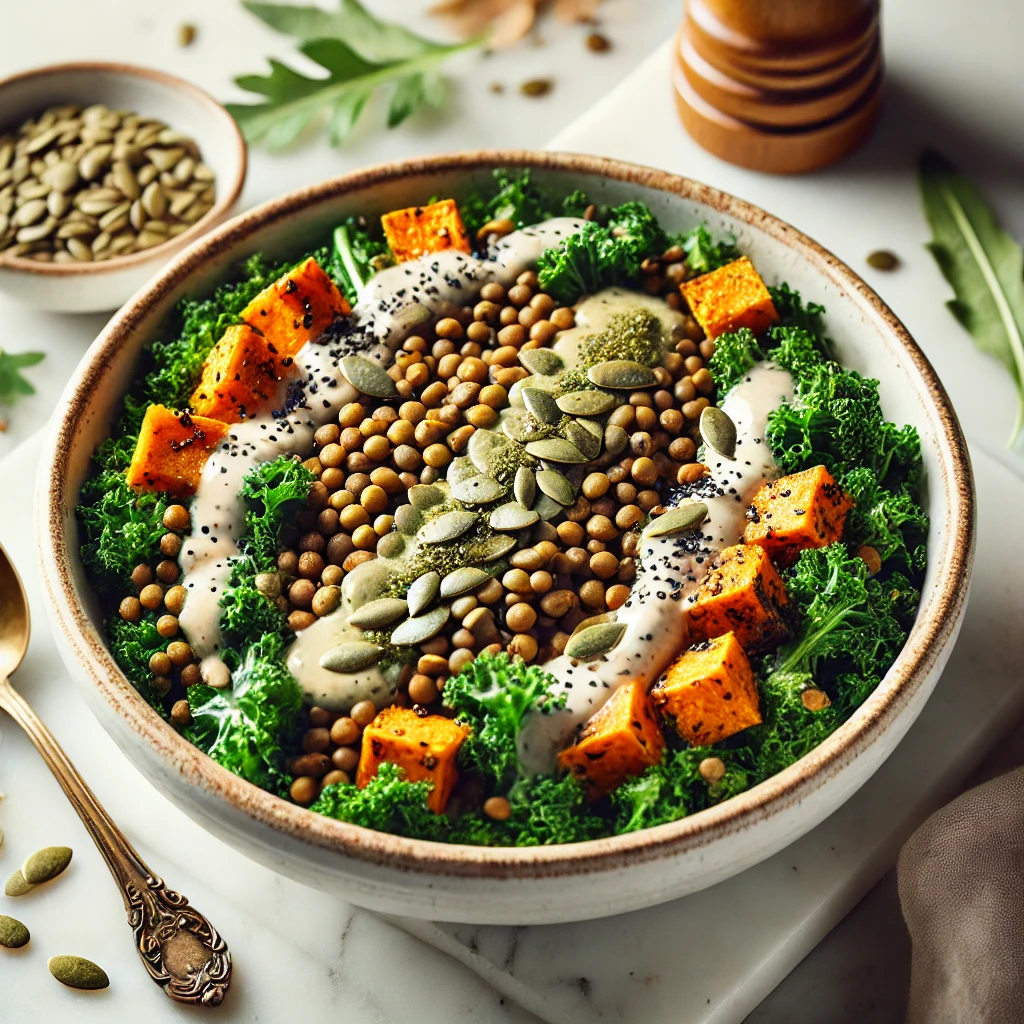
Vegan and Dairy-Free High-Protein Salad Recipes
Plant-based eaters rejoice! These salads are dairy-free and packed with vegan protein sources:
3. Lentil and Roasted Veggie Salad
- Ingredients: Cooked lentils, roasted sweet potatoes, kale, and tahini dressing.
- Protein Highlight: Lentils are high in protein and fiber, making this a hearty option.
4. Tofu and Edamame Salad with Sesame Dressing
- Ingredients: Cubed tofu, steamed edamame, shredded carrots, and sesame dressing.
- Protein Highlight: Tofu and edamame are plant-based powerhouses.
These recipes are inspired by “Vegan High-Protein Salad Recipes” and “Dairy-Free High-Protein Salad Recipes,” making them perfect for those avoiding animal products.
Protein-Packed Salad Bowls for Muscle Building
For strength training and muscle building, these salads deliver the protein your body craves:
5. Steak Salad with Sweet Potatoes and Spinach
- Ingredients: Sliced grilled steak, roasted sweet potatoes, spinach, and balsamic glaze.
- Protein Highlight: Lean steak provides a protein boost to help repair muscles.
6. Hard-Boiled Egg and Chickpea Salad
- Ingredients: Hard-boiled eggs, chickpeas, arugula, and tahini dressing.
- Protein Highlight: Eggs and chickpeas are protein-packed and satiating.
Find more inspiration in “Protein-Packed Salad Bowls for Muscle Building.”
Breakfast and Post-Workout High-Protein Salads
Start your day with protein-rich breakfast salads or refuel after a workout with these options:
7. Greek Yogurt and Granola Salad with Berries

- Ingredients: Greek yogurt, granola, mixed berries, and honey drizzle.
- Protein Highlight: Greek yogurt offers high protein content to kickstart your day.
8. Smoked Salmon Salad with Avocado and Eggs
- Ingredients: Smoked salmon, avocado slices, soft-boiled eggs, and mixed greens.
- Protein Highlight: Salmon and eggs provide essential amino acids and omega-3s.
These are inspired by “High-Protein Breakfast Salad Recipes” and “The Role of Protein in Post-Workout Recovery Salads.”
Budget-Friendly High-Protein Salad Recipes
Eating healthy doesn’t have to break the bank. Try these affordable recipes:
9. Chickpea and Roasted Red Pepper Salad
- Ingredients: Canned chickpeas, roasted red peppers, parsley, and olive oil.
- Protein Highlight: Chickpeas are an economical and versatile protein source.
10. Tuna Salad with Mixed Greens and Olive Oil
- Ingredients: Canned tuna, mixed greens, cherry tomatoes, and olive oil.
- Protein Highlight: Canned tuna is a budget-friendly protein option rich in omega-3s.
For more ideas, check out “High-Protein Tuna Salad Recipes for Busy Days” and “Best Protein Sources for Budget-Friendly Salads.”
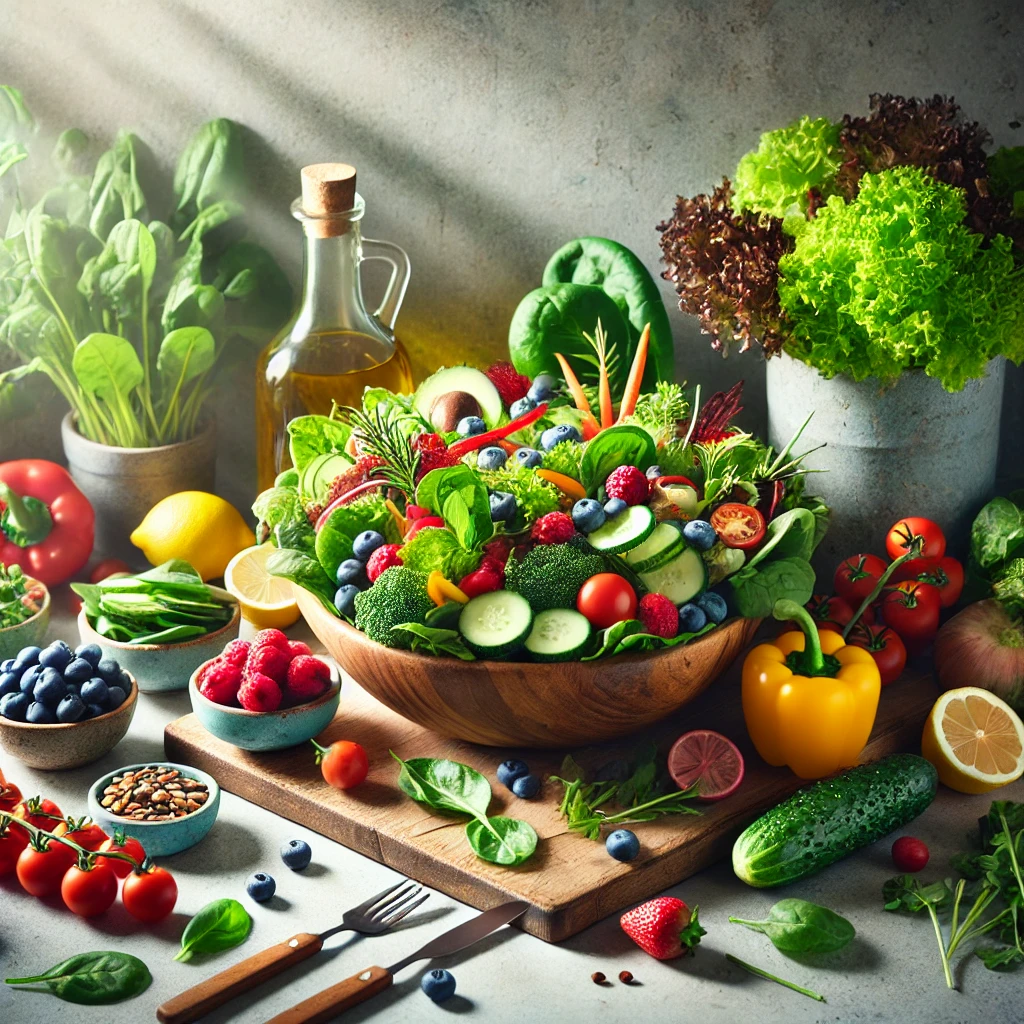
Tips and Tricks for Perfect High-Protein Salads
Creating the perfect high-protein salad goes beyond just tossing ingredients together—it’s about balancing flavors, textures, and nutrients. By avoiding common mistakes and learning how to maximize protein content, you can elevate your salads to a whole new level. In this section, we’ll cover mistakes to avoid when building a protein-packed salad and share practical tips on how to add protein effectively for a healthy, satisfying meal.
How to Add Protein to Any Salad
Maximize the protein content of your salads with these tips:
- Incorporate legumes: Lentils, black beans, and chickpeas are easy to prepare and full of protein.
- Don’t forget nuts and seeds: A sprinkle of almonds, sunflower seeds, or pumpkin seeds can add crunch and nutrients (see “How to Add Nuts and Seeds for Extra Protein in Salads”).
- Experiment with tofu and tempeh: These are versatile and can be marinated to match any flavor profile (explore “How to Add Tofu to Your High-Protein Salads”).
Common Mistakes to Avoid When Making High-Protein Salads
Even the best intentions can lead to less-than-ideal results if certain pitfalls aren’t avoided. Here are the most common mistakes people make when preparing high protein salad recipes, along with tips to ensure your salad remains a healthy and balanced meal.
1. Overloading on Extras
While adding toppings and dressings can enhance flavor and texture, too much of the wrong extras can quickly turn a healthy salad into a calorie bomb. Creamy dressings, excessive cheese, croutons, or fried toppings may be tempting, but they can add unnecessary fats, sugars, and calories that overshadow the benefits of your protein rich salad ideas.
Tips to Avoid Overloading:
- Opt for healthy protein packed salads by using dressings made with Greek yogurt, tahini, or olive oil and vinegar.
- Limit high-calorie toppings like shredded cheese or candied nuts; instead, use a light sprinkle of seeds or nutritional yeast for a flavorful, low-calorie alternative.
- Keep portions balanced by measuring ingredients. For example, 1–2 tablespoons of dressing and a small handful of toppings can go a long way without overwhelming your salad.
2. Skimping on Protein
The star of a high-protein salad for weight loss or muscle building is, of course, the protein. Skimping on protein can leave you hungry soon after eating, defeating the purpose of a balanced, satisfying meal. A salad without enough protein can also lead to energy dips, especially if you’re relying solely on greens or low-calorie vegetables.
How Much Protein Do You Need?
- Aim for at least 20–30 grams of protein per meal. This amount is ideal for satiety and supporting muscle repair.
- Add protein-rich ingredients like grilled chicken, shrimp, tofu, hard-boiled eggs, or beans. A single chicken breast or 1 cup of lentils can provide about 25 grams of protein.
Pro Tip: Incorporate easy protein salads for meal prep into your routine by batch-cooking proteins like quinoa, roasted chickpeas, or boiled eggs in advance. This ensures you always have protein on hand to add to your salads.
3. Lack of Variety
Eating the same salad every day can lead to boredom and may cause you to abandon healthy habits altogether. A lack of variety also means missing out on the diverse nutrients that different ingredients offer. For example, spinach provides iron and folate, while quinoa adds protein and fiber.
Ways to Add Variety:
- Rotate Proteins: Experiment with different protein sources like grilled fish, tempeh, nuts, seeds, or cottage cheese. Explore keto-friendly high-protein salads by including fatty fish or avocado as a protein-rich option.
- Switch Up Greens: Try kale, arugula, or mixed greens instead of sticking to one type.
- Add Seasonal Ingredients: Use fresh fruits and vegetables in season, like roasted butternut squash in the fall or juicy watermelon in the summer.
- Try International Flavors: Add variety with dressings inspired by global cuisines, such as sesame-ginger, tzatziki, or chimichurri.
A well-rounded salad doesn’t just keep things exciting—it ensures you’re getting a broad range of nutrients for better overall health.
How to get 100% protein a day?
To get 100g of protein a day, it’s important to strategically include high-protein foods throughout your meals and snacks. Here’s a detailed plan to help you meet this protein goal:
1. Focus on Protein-Rich Meals
Start your day with a high-protein breakfast. Instead of traditional cereals, swap for eggs (19g of protein per 3 eggs) or Greek yogurt (10g of protein per 3.5 oz serving). These foods help you feel full and provide essential nutrients.
For lunch, incorporate lean meats, fish, or legumes into your meals. A grilled chicken breast (about 26g protein per 3 oz) or a serving of edamame (18g of protein per cup) will help keep you on track.
2. Snack on High-Protein Foods
In between meals, snack on protein-rich options like cheese (7g of protein per ounce of cheddar), cottage cheese (23g of protein per cup), and nuts like almonds (6g of protein per ounce). These snacks are convenient and portable, making it easier to hit your target.
3. Add Protein Powders and Shakes
Another easy way to reach your 100g goal is by adding a protein shake to your day. A scoop of whey protein (17g of protein per scoop) blended with almond milk and fruits makes for a filling and nutritious breakfast or post-workout snack.
4. Incorporate More Whole Grains and Legumes
Don’t forget about whole grains like quinoa (8g of protein per cup) and lentils (23g of protein per 100g serving). These not only boost your protein intake but also provide fiber, vitamins, and minerals. Add them to salads, stir-fries, or soups.
5. Choose Protein at Every Meal
Aim for 30–40g of protein per meal. By incorporating a variety of protein sources, such as tofu, tempeh, or lean jerky, you can easily reach 100g of protein by the end of the day.
By planning your meals to include protein-rich foods and snacks, you can easily achieve your 100g protein goal daily, boosting muscle growth, weight management, and overall health.
How much protein a day?
How Much Protein Do I Need a Day?
The amount of protein you need daily depends on various factors, including your age, level of physical activity, weight, height, and genetics. For most adults, the USDA recommends consuming between 46 to 56 grams of protein per day. However, if you’re aiming for weight loss or muscle gain, or if you have specific fitness goals, your protein needs may be higher.
Key Factors Affecting Protein Needs:
- Age: As you age, especially around the age of 40-50, you may lose lean muscle mass. Increasing your protein intake can help maintain muscle mass as you age.
- Activity Level: If you engage in regular physical exercise or strength training, your protein requirements will be higher to help repair and build muscle tissue.
- Weight: Larger individuals generally require more protein to support their body’s functions, but if you’re overweight, working with a doctor or nutritionist to create a tailored plan is recommended.
- Height: Taller individuals may also need more protein to support their body’s increased muscle and tissue mass.
- Genetics: Genetic variations may impact how much protein your body needs, so personalized plans may be necessary.
Why Protein is Important:
Protein is essential for maintaining lean muscle, controlling appetite, and supporting bodily functions. By including sufficient protein in your diet, you can promote muscle growth, enhance recovery from exercise, and maintain a healthy body composition.
For Weight Loss: Protein can increase satiety and reduce hunger, making it easier to consume fewer calories without feeling deprived.
High Protein Diets: If you’re on a high-protein diet for weight loss or fitness goals, you may need to consume more protein than the standard recommendation. Combining this with regular exercise can lead to better weight loss results.
In conclusion, adjusting your protein intake based on your individual needs—whether for weight loss, muscle building, or general health—can support your fitness journey effectively. Consider speaking with a healthcare professional to determine the optimal protein intake for you.
Conclusion
High-protein salads are more than just a meal—they’re a lifestyle upgrade. By incorporating diverse ingredients and tailoring recipes to your needs, you can enjoy meals that fuel your body and fit your goals.
From breakfast to dinner, and even meal prep, the possibilities with high-protein salad recipes are endless. Whether you’re looking for muscle-building meals or budget-friendly options, there’s something here for everyone.
Take the next step in your health journey by trying these recipes and experimenting with your favorite ingredients. Your body—and taste buds—will thank you!
FAQs About High-Protein Salad Recipes
What are the best high-protein salad recipes?
The best high-protein salads are those that suit your dietary preferences and fitness goals. For example:
- Chicken and quinoa salad for a balanced meal.
- Lentil and roasted veggie salad for a vegan option.
- Tuna and avocado salad for omega-3s and healthy fats.
These recipes are adaptable, making them ideal for various lifestyles and tastes.
How do I make a high-protein salad for weight loss?
To create a high-protein salad for weight loss, follow these tips:
- Use lean proteins like grilled chicken, turkey, or fish.
- Include fiber-rich greens like kale or spinach to keep you full.
- Keep dressings light by opting for options like lemon vinaigrette or a Greek yogurt-based dressing.
These healthy protein-packed salads help control hunger while supporting weight loss goals.
What are some easy protein salads for meal prep?
For easy protein salads for meal prep, choose ingredients that hold up well in the fridge:
- Quinoa salad with grilled chicken: Add veggies like bell peppers and cucumbers for crunch.
- Black bean and corn salad: A plant-based option that’s high in protein and lasts for days.
- Egg salad with mixed greens: Simple, delicious, and ready in minutes.
Can I make high-protein vegetarian salads?
Yes! High-protein vegetarian salads are easy to prepare using plant-based proteins like:
- Lentils and chickpeas.
- Tofu or tempeh, marinated for flavor.
- Nuts and seeds such as almonds, sunflower seeds, or pumpkin seeds.
Try recipes like a lentil and roasted vegetable salad or a tofu and edamame salad for protein-packed meals.
What are keto-friendly high-protein salads?
Keto-friendly high-protein salads focus on high-fat, low-carb ingredients with plenty of protein. Examples include:
- Avocado and grilled chicken salad: Add olive oil and lemon for a keto-approved dressing.
- Spinach salad with bacon and eggs: A classic combination that’s both keto and high-protein.
- Salmon and mixed greens salad: Packed with omega-3s and essential amino acids.
Are there gluten-free high-protein salads?
Absolutely! Many high-protein salad recipes are naturally gluten-free. Stick to ingredients like:
- Lean meats, seafood, or plant-based proteins like tofu.
- Gluten-free grains such as quinoa or wild rice.
- Fresh veggies, fruits, and nuts.
A chicken and avocado salad or a quinoa and black bean salad are great gluten-free options.
What are the benefits of post-workout protein salad recipes?
Post-workout protein salad recipes help your muscles recover faster and replenish energy. Examples include:
- Kale and grilled chicken Caesar salad: With Greek yogurt dressing for added protein.
- Sweet potato and steak salad: Combines carbs and protein for recovery.
- Spinach and hard-boiled egg salad: A light but satisfying option.
These protein-rich salad ideas are easy to prepare and packed with nutrients.
What are high-protein salads under 400 calories?
If you’re watching your calorie intake, try these healthy protein-packed salads:
- Tuna salad with mixed greens and olive oil: A light yet filling option.
- Lentil and cucumber salad: High in protein and fiber, perfect for vegan diets.
- Grilled shrimp and spinach salad: Low in calories and rich in nutrients.
Can high-protein salads help with muscle building?
Yes, high-protein salads are excellent for muscle building. Look for recipes that include:
- Lean meats like chicken, turkey, or steak.
- High-protein grains such as quinoa or farro.
- Plant-based proteins like beans, tofu, or edamame.
A steak and sweet potato salad or a quinoa and grilled chicken bowl can provide the nutrients your muscles need to grow.
What are 3 examples of food rich in protein?
Three examples of foods rich in protein are:
- Lean meats: Beef, lamb, veal, pork, and kangaroo are excellent sources of high-quality protein, containing all essential amino acids your body needs for muscle and bone repair, as well as enzyme and hormone production.
- Fish and seafood: Fish like salmon and tuna, along with shellfish like prawns and mussels, provide a great amount of protein and essential amino acids, supporting various bodily functions.
- Eggs: Eggs are a versatile and high-quality protein source, containing all nine essential amino acids. They can be included in numerous dishes, offering a nutrient-packed option for any meal.
These foods are easily incorporated into a balanced diet to meet daily protein needs, supporting muscle repair, growth, and overall body function.
What is the healthiest protein to eat daily?
The healthiest protein to eat daily is one that supports overall health while minimizing risks associated with heart disease, weight gain, and other health issues. The American Heart Association (AHA) recommends focusing on a variety of protein sources to achieve this balance. Here are the key guidelines:
- Plant-based proteins: Incorporating more plant-based protein sources into your diet is beneficial for both heart health and general wellness. Foods such as beans, lentils, tofu, tempeh, quinoa, and nuts provide protein without the unhealthy fats often found in animal products. These plant-based proteins also offer fiber, vitamins, and antioxidants, which contribute to a lower risk of chronic diseases like cardiovascular issues and diabetes.
- Fish and seafood: Regularly including fish and seafood in your diet is another excellent way to meet your daily protein needs. Fatty fish, such as salmon, trout, and mackerel, are rich in omega-3 fatty acids, which have been shown to reduce inflammation, lower blood pressure, and improve heart health. Seafood provides high-quality protein with fewer saturated fats than many meat-based options, making it a heart-healthy choice.
- Fat-free and low-fat dairy: When choosing dairy products, opt for fat-free or low-fat versions instead of full-fat options. Low-fat milk, yogurt, and cheese provide essential protein and calcium while reducing your intake of unhealthy saturated fats, which can increase cholesterol levels and contribute to heart disease. Greek yogurt is a particularly great choice, as it’s high in protein and beneficial probiotics.
- Lean and unprocessed meats: If you include meat or poultry in your diet, it’s important to choose lean and unprocessed options. Skinless chicken, turkey, lean cuts of beef or pork, and plant-based meat alternatives are great choices. These types of meats are lower in saturated fat and calories, which helps maintain a healthy weight and reduces the risk of heart disease. Avoid processed meats such as sausages, bacon, and deli meats, which often contain unhealthy additives and high levels of sodium.
By prioritizing these protein sources, you can ensure that your diet supports long-term health, reduces the risk of chronic diseases, and promotes optimal nutrition. It’s important to eat a variety of these foods in moderation, as part of a balanced diet rich in fruits, vegetables, whole grains, and healthy fats.
What is a good high protein breakfast?
A good high-protein breakfast should ideally provide at least 20 grams of protein to keep you energized and curb cravings throughout the day. Here are some excellent options:
- Overnight Oats with Blueberries
Ingredients: ½ cup oats, ½ cup Greek yogurt, ½ cup milk, 1 tbsp chia seeds, ½ cup blueberries
Protein: 25 grams
Calories: 395 - Cottage Cheese Toast
Ingredients: 2 slices sprouted toast, ½ cup cottage cheese, ¼ avocado, 1 tsp sesame seeds
Protein: 20 grams
Calories: 319 - Smoked Salmon Bagel
Ingredients: ½ whole-wheat bagel, 2 tbsp cream cheese, 1 oz smoked salmon, ¼ cup alfalfa sprouts
Protein: 20 grams
Calories: 314 - Beany Breakfast Burritos
Ingredients: 1 whole-wheat tortilla, 2 large eggs, ½ cup black beans, 2 tbsp salsa fresca
Protein: 21 grams
Calories: 332
These high-protein meals are simple, nutritious, and perfect for powering your morning, helping to maintain energy levels and support your fitness goals.
What is a good healthy breakfast to go to?
A good healthy breakfast to go to could include options such as:
- Eggs: Rich in protein, they help with muscle growth and keep you full longer. Pair with whole grain toast, vegetables, or fruit for a balanced meal.
- Greek Yogurt: High in protein and probiotics, it’s great for digestion. You can top it with berries, nuts, or oats for added texture and nutrients.
- Oatmeal: Contains fiber and antioxidants. It’s filling and can help lower cholesterol levels. Add nuts, seeds, or fruit for a more nutrient-dense meal.
- Chia Seeds: High in fiber, they help you feel full longer. Combine with yogurt, cottage cheese, or a protein shake for a more balanced breakfast.
- Berries: Low-calorie and high in antioxidants, berries can be added to yogurt, oatmeal, or smoothies for added flavor and nutrients.
These options provide a mix of protein, fiber, and essential nutrients, helping to keep you energized throughout the morning.
you may also like:
Salad Recipes for Weight Loss: The Ultimate Guide to Healthy Eating and Wellness
Unlock the Benefits of Salad: Nutritional Power for Health, Wellness, and Active Living
Post-Workout Recovery Salads: Refuel, Rebuild and Recharge
Energy-Boosting Salad Recipes: A Complete Guide to Power-Packed Meals
More relevant articles here >>>
More Health and Wellness salad recipes >>>
More Energy and Active Lifestyle salad recipes >>>
More Cultural and Seasonal Recipes >>>
References:
Effects of high-protein diets on fat-free mass and muscle protein synthesis following weight loss
Effect of High-Protein Diets on Integrated Myofibrillar Protein Synthesis




